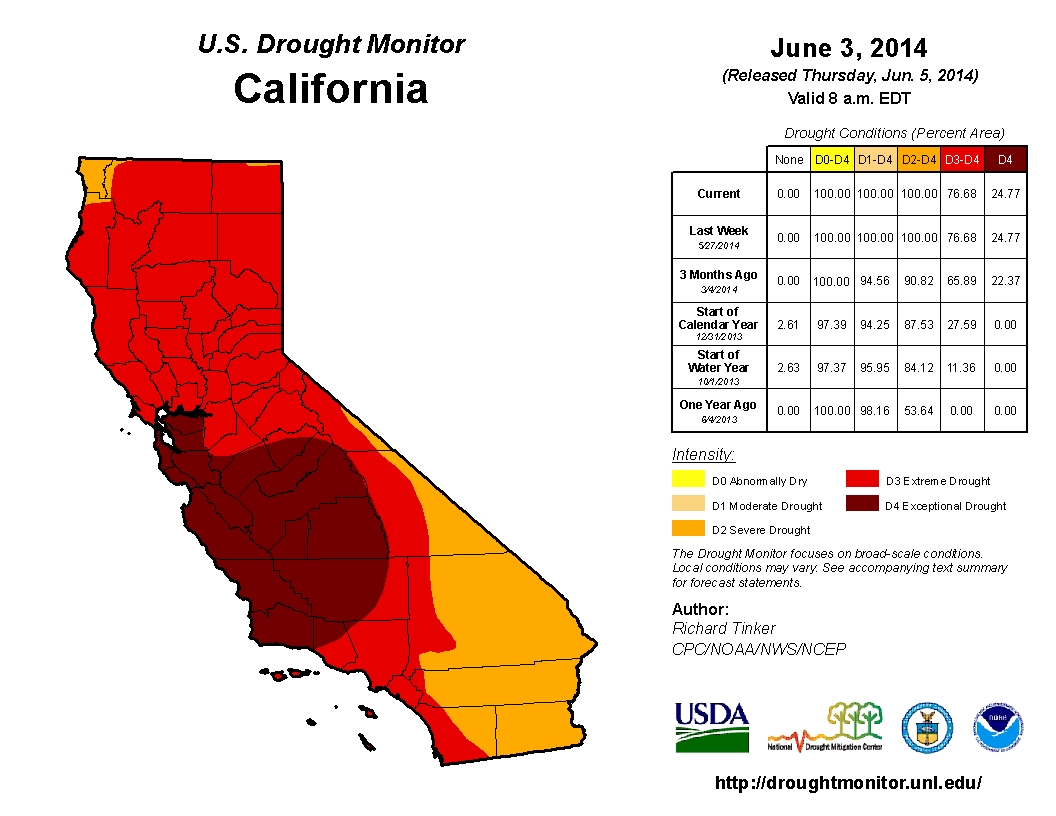In California, it’s almost impossible to avoid hearing about the drought. Restaurants serve water only upon request, “Save Our Water” radio ads run daily, and the issue headlines news broadcasts.
The persistent drought threatens to increase the risk of wildfires, damage crops, and harm wildlife. For example, UC Davis researchers estimate the state’s farm industry could lose $1.7 billion and nearly 15,000 jobs in 2014 due to the drought.
While Californians are no strangers to drought, this one in particular is cause for alarm. For the first time in the 15-year history of the National Drought Monitor, the entire state faces ‘severe’ (in yellow in Figure 1 below), ‘extreme’ (in red), or ‘exceptional’ (in dark red) levels of drought. In fact, October 2013-September 2014 could wind up being one of the driest periods in nearly 500 years.
Relief is unlikely to come soon. The Climate Prediction Center at the National Oceanic and Atmospheric Administration (NOAA) suggests the drought will persist and intensify in California through the summer.


